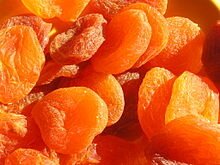Does the warning ‘contains sulphites’ on the label of a bottle of wine cause you to think twice? Such a warning can worry a lot of wine lovers . . . but it’s overkill on the part of bureaucrats. We are doing a little myth busting on scary sulphites – read on to discover if you should be concerned . . .
 The fact is that we are all concerned about what’s in our food and drink nowadays and this is a good thing.
The fact is that we are all concerned about what’s in our food and drink nowadays and this is a good thing.
However the warning ‘contains sulphites’ that winks out at you on a wine bottle’s label is misleading. It’s a ‘catch-all’ phrase that has gone too far as ALL wines contain miniscule amounts of sulphites, no matter whether they are natural wines, organic or bio dynamic.
Tiny amounts of ‘Natural Sulphites’ are always produced as part of the process of fermentation. The message labels carry is not helpful to the consumer as the fuss should be about ‘Added Sulphites’ instead.
Let me explain why there is a fuss about sulphites in the first place. Sulphite intolerance reportedly affects less than 1% of the the population but, just as we have to have ‘contains nuts’ warning on foods, the public must be cautioned about wines that contain them.
An adverse reaction to sulphites in wine is extremely rare but if you do have an intolerance you must be careful, especially if you are an asthmatic.
That said, wine contains 10 times less sulphites than a handful of dried apricots which can contain up to 3000 ppm (parts per million). You’d probably find more sulphites in your pizza than in your glass of wine.
 In the EU the maximum levels of sulphur dioxide that a wine can contain are 160 ppm for red wine and 210 ppm for white wine.
In the EU the maximum levels of sulphur dioxide that a wine can contain are 160 ppm for red wine and 210 ppm for white wine.
Given that the levels of Natural Sulphites in wine are tiny and that 99% of us won’t be affected by them anyway why is popular opinion so distrustful of sulphites in wine? It’s because of Added Sulphites. Wine is perishable and sulphites are preservatives – they have antibacterial, antifungal and antioxidant properties.
Without sulphites wines generally have a very short shelf life (about 6 months tops). This is why large scale producers add sulphites to their wines and this is why the level of sulphite added to wine has been capped. If you are a large producer making wine in bulk and shipping it across to the UK over long distances you will need to add sulphites to your wine to stop it going off.
 Typically smaller and/or artisan producers creating wines that are meant to age and develop in bottle will wait to see if adding sulphites is necessary. Bordeaux is a great example of this but there are many other quality wine producers across France who follow the same principle.
Typically smaller and/or artisan producers creating wines that are meant to age and develop in bottle will wait to see if adding sulphites is necessary. Bordeaux is a great example of this but there are many other quality wine producers across France who follow the same principle.
Fermentation alone doesn’t produce enough Natural Sulphites to kill off bacteria so they either add as little as they can or sterilise the wine by running it through a narrow tube contained in a bigger one full of hot water. If you are a bulk wine producer you don’t have the time to watch and wait so you add sulphites as a matter of course.
You don’t have the time to express the finest points of each vintage either. Your wines must be consistent so there is less fiddling about with pesky hand picking and hand sorting of grapes (a principle that is highly prized in Bordeaux to ensure healthy grapes, i.e. no rot). Your grapes will be machine harvested and sorted because you know that a good dollop of sulphites will cure all.
 All the wines I select for Bordeaux-Undiscovered have been made by small producers and have been made to the highest standards.
All the wines I select for Bordeaux-Undiscovered have been made by small producers and have been made to the highest standards.
You won’t find any bulk produced wine here.Claude Gros, the brilliant oenologist behind many excellent wines (including Chateau La Fleur Morange), agrees with me that the message on the label should state ‘No Added Sulphites’ as it tells anxious consumers so much more than the generic ‘Contains Sulphites’.
Firstly ‘No Added Sulphites’ lets the wine enthusiast know that the wine only contains Natural Sulphites and hasn’t had any extra added in.
Secondly it would infer to those in the know that the wine hasn’t been bulk produced but has been carefully made by a good wine maker who has watched over the process like a hawk.

